INDIAN ARMED FORCES CHIEFS ON OUR RELENTLESS AND FOCUSED PUBLISHING EFFORTS

The insightful articles, inspiring narrations and analytical perspectives presented by the Editorial Team, establish an alluring connect with the reader. My compliments and best wishes to SP Guide Publications.

"Over the past 60 years, the growth of SP Guide Publications has mirrored the rising stature of Indian Navy. Its well-researched and informative magazines on Defence and Aerospace sector have served to shape an educated opinion of our military personnel, policy makers and the public alike. I wish SP's Publication team continued success, fair winds and following seas in all future endeavour!"

Since, its inception in 1964, SP Guide Publications has consistently demonstrated commitment to high-quality journalism in the aerospace and defence sectors, earning a well-deserved reputation as Asia's largest media house in this domain. I wish SP Guide Publications continued success in its pursuit of excellence.
Major Milestones in 2022: Military Aviation
From hypersonic strike missiles to sixth generation combat aircraft, as some major projects fructified, the year 2022 saw military aviation technology progressing in leaps and bounds

The year has been significantly eventful, we look at some major milestones achieved in the military aviation domain.
GERMAN AIR FORCE DECIDES ON F-35S
Lockheed Martin’s F-35 undoubtedly seems to be the fighter aircraft of the year 2022. Germany in March 2022 put to rest its long raging debate about the best aircraft to replace its ageing Tornado strike fighters. F/A-18E/Fs and EA-18Gs so far was a strong contender, the German government decided to buy 35 Lockheed Martin F-35, at an estimated cost of Euro 7.6 billion, and additional Euro 2.4 billion for weapons and infrastructureat its operating base.
In 2021, Finland and Switzerland selected the F-35, thereafter, the Czech Republic opted for F-35As and Greece submitted a request to purchase the US built fighter.
The F-35 is a $412 billion programme, started in 2019, and is yet to enter full rate production, owing to testing delays and other issues. The US Air Force (USAF) plans to buy 1,763 of these, although it has hinted it may cut that to 1,050; the US Navy wants 273; and the US Marines want 420. Under current plans, the Pentagon will buy one third of its 2,470 aircraft F-35 fleet (including 14 test models) before green lighting full rate production. 2022 was also the year when, delivery of new F-35s was temporarily halted when it was discovered that there were Chinese made materials in the aircraft.
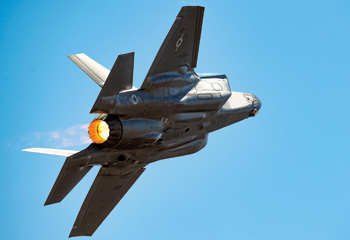

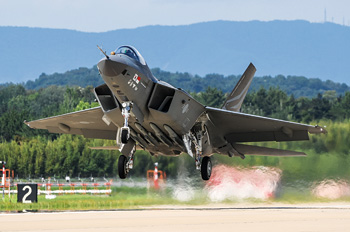
AUTOMATED REFUELING
In July 2022, Airbus’ A330 Multi-Role Tanker Transport (MRTT) became the first tanker to be certified for automatic air-to-air refueling (A3R) without a boom operator. Spain’s National Institute of Aerospace Technology signed off on the A3R capability to refuel the F-16 during daylight following a test campaign in collaboration with the Republic of Singapore Air Force.
A3R as a technology is developed and patented by MTSI that makes the receiving aircraft passive. This capability has been developed with an objective to improve overall safety of aerial refueling missions by accurately maneuvering the hose to the receiving aircraft through the use of machine vision and autonomous controls. A3R allows manned or unmanned tanker to refuel autonomous systems in a manner that keeps them focused on the mission at hand. This solution can easily be configured to various host platforms and provides a means to make legacy and future UAS systems air refuellable.
KF-21 FLIES
After being unveiled in April 2021 during a rollout ceremony at the headquarters of Korea Aerospace Industry (KAI) at Sacheon Airport, the KAI KF-21 Boramae fighter completed its first flight on July 19, 2022.
The KF-21 Boramae (young hawk’ or ‘fighting hawk’) is a Korean lead fighter aircraft development programme with the goal of producing an advanced multirole fighter for the South Korean and Indonesian Air Force. It is powered by a pair of General Electric F414s engines, the aircraft carries four captive MBDA Meteor missiles. Programme partner Indonesia later reiterated its support for development of the KF-21.
Manufacturing is scheduled to begin in 2026. At least 40 aircraft are planned to be delivered by 2028, with South Korea expecting to deploy a total of 120 of the aircraft by 2032. It will also be available for export market, as of now, Poland has shown interest in joining the programme.
B-21 RAIDER
Northrop Grumman’s B-21 Raider was unveiled on December 2, 2022 at the company’s site in Palmdale, California, marking the first time the world’s first sixth-generation aircraft to be seen by the public. The Company unveiled B-21, 34 years after the unveiling of its predecessor B-2 and seven years after the company won the Long-Range Standoff Bomber contract. The USAF plans to buy 100 B-21s to replace its B-1s and B-2s, beginning in the mid-2020s.
HYPERSONIC VEHICLES
Several countries are developing hypersonic weapons, which fly at speeds of at least Mach 5. There are two primary categories of hypersonic weapons:
- Hypersonic glide vehicles (HGV) are launched from a rocket before gliding to a target.
- Hypersonic cruise missiles are powered by high-speed, airbreathing engines, (scramjets) after acquiring their target.
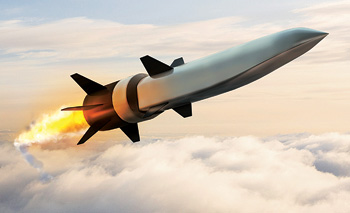
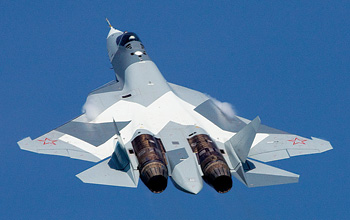
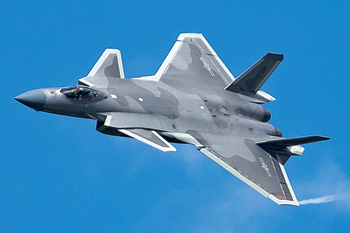
Unlike ballistic missiles, hypersonic weapons do not follow a ballistic trajectory and can maneuver enroute to their destination. Hypersonic weapons could challenge detection and defend due to their speed, maneuverability and low altitude of flight.
The US has actively pursued the development of hypersonic weapons as a part of its conventional prompt global strike programme since the early 2000s.
The US Government has shown a growing interest in pursuing the development and nearterm deployment of hypersonic systems. This is due to the fact that both Russia and China, have made numerous technological advances, both countries have a number of hypersonic weapons programmes and in all probability have operationalised their Hypersonic Glide Vehicles (HGVs). In the US, Raytheon and Northrop Grumman jointly conducted two hypersonic flights, launched from an F/A-18F, under a competitive Hypersonic Air Breathing Weapon Concept (HAWC) programme. Thereafter, in September 2022, they have been selected to develop the air launched scramjet powered Hypersonic Attack Cruise Missile (HACM) for the USAF and Australian Air Force.
Russia is pursuing two hypersonic weapons programmes—the Avangard and the 3M22 Tsirkon (or Zircon). It has reportedly operationalised the Kinzhal, ‘Dagger’, a maneuvering air launched ballistic missile. In addition, Russia is also developing Zircon, a ship launched hypersonic cruise missile. Zircon is reportedly capable of striking both ground and naval targets. According to Russian sources, Zircon has a maximum range of approximately 625 miles and can be fired from the vertical launch systems mounted on cruisers, frigates corvettes, and a few submarines.
Russia reportedly fired Kinzhal from a MiG-31 aircraft in Ukraine and additionally plans to deploy the missile on the Su-34 long-range strike fighter and the Tu-22M3 strategic bomber.
RUSSIAN SU-57 AIRCRAFT
The Su-57 is a multirole fighter developed for taking on land, maritime and airborne targets. It features stealth technology and is currently one of the few fifth generation fighter jets (besides the US F-22, F-35, and China’s J-20) operational in the world.
According to reports, the 23rd Fighter Aviation Regiment, based at Dzyomgi in Russia’s Far East, were the first operational unit within the Russian Aerospace Forces (VKS) to receive these new stealth fighters.
This unit has been a part of Russia’s invasion effort since the beginning of Moscow’s ‘special military operations’ against Ukraine in February 2022. It was first in June 2022 that Russian media reported that Russia had deployed four Su-57s against Ukraine and the aircraft was being used to establish a tactical information network. In late September 2022, a video purportedly showing Su-57 stealth fighter jet flying along the border with Ukraine was widely shared on social media. Reports in the local Russian media have also suggested that a Su-57 shot down a Ukrainian Su-27 Flanker by firing a long-range R-37M missile.
The Russian defence ministry placed a contract for 76 fighters with deliveries planned between 2022 and 2027. Russia is known to be expanding its capacity to produce fifth generation Su-57 fighters. However, the overall planned delivery of the Su-57 fighter jets has been delayed and four aircraft that were to be delivered by the end of 2022 will probably be ready by mid-2023. The country has also been pitching the aircraft to friendly countries, the most recent instance being the Su-57’s display at China’s Air Show 2022 at Zuhai.
CHINESE J-20 STEALTH FIGHTER
On November 8, 2022 for a duration of eight days, J-20s took part took in aerial display at China Air Show 2022, in Zhuhai, South China’s Guangdong Province. It displayed the J-20’s outstanding maneuverability.
The aircraft is being designed and developed by stateowned Aviation Industry Corp of China (AVIC).
China will continue to upgrade the J-20 stealth fighter jet by employing the latest artificial intelligence (AI) and cognitive technologies, to make it perform at its best as a combat system.
J-20s is reported be having a datalink making it feasible for it to team up with a J-16 and a J-10C through some compatible systems. Recent news reports also suggested that the J-20 can fly together with drones. The J-20 will also closely integrate into ground, sea, air and space systems.
INDIAN MILITARY AVIATION SECTOR IN 2022
While globally military aviation sector has been buzzing with activity, Indian Defence sector also earned itself a good name in 2022, thanks to the impetus provided to Atamnirbharat drive by the government. 2022 has been a year of achievements and accolades for Indian defence manufacturing sector. Some of the major landmark events of Indian military aviation are highlighted below.
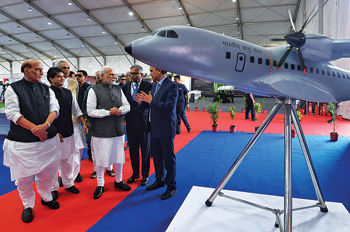
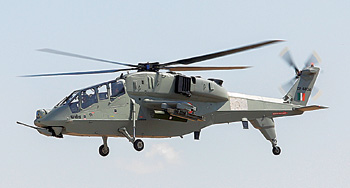
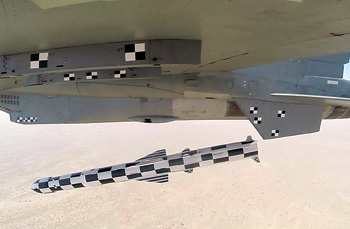
LCH Prachand
One of the major induction for the year 2022 has been indigenous Light Combat Helicopters (LCH), named LCH Prachand, that was formally inducted into the 143 Helicopter Unit of the Indian Air Force (IAF) at the Jodhpur airbase on October 4, 2022.
Designed and developed by Hindustan Aeronautics Ltd (HAL), the multi-role attack helicopter has been customised as per the requirements of the Indian armed forces to operate both in desert terrains and high-altitude sectors. The LCH is the only attack helicopter in the world that can land and take off at an altitude of 5,000 metres (16,400 ft), which makes it ideal to operate in the high altitude areas of the Siachen glacier. It is also capable of firing a range of air-to-ground and air-toair missiles. The LCH is a 5.5 tonne class chopper, powered by two Shakti engines. It is armed with 20mm turret guns, 70mm rocket systems and two Mistral air-to-air missiles. It has formidable night attack capability, modern stealth characteristics, robust armour protection and advanced navigation system, an ideal system for modern day warfare.
C295 Aircraft Production
The C295 transport aircraft manufacturing is a great success story for India. It is the first time ever that a private sector company is going to manufacture military transport aircraft for the IAF. On October 30, 2022 the Prime Minister Narendra Modi laid the foundation stone of the C295 transport aircraft manufacturing plant, in Vadodara, Gujarat. The C295 transport aircraft for the IAF will be manufactured by under Tata and Airbus collaboration.
The C295 is a 5-10 tonne capacity aircraft, planned to replace IAF’s ageing fleet of Avro-748 transport aircraft, that entered service in the early 1960s.
A 21,935 crore deal was signed in September 2021, with Airbus Defence and Space to procure 56 C295 aircraft. The first 16 fly away aircraft are scheduled to be delivered to the IAF between September 2023 and August 2025. The balance 40, aircraft built in India would be supplied between 2026 to 2031.
Apart from making 40 aircraft, this facility would be manufacturing additional aircraft for domestic requirements and exports.
BrahMos- Enhanced Range
BrahMos is the only supersonic cruise missile in the world. Another key development of the year has been the introduction of the BrahMos supersonic cruise missiles with enhanced range. The IAF successfully fired the Extended Range Version of BrahMos Air Launched missile against a ship target from Su-30 MKI aircraft on May 12 and December 29, 2022. The missile achieved the desired mission objectives.
The BrahMos missiles are manufactured in India under a joint venture, formed in 1998 between India’s Defence Research and Development Organisation (DRDO) and Russia’s NPO Mashinostroyeniya. The original BrahMos, had a range of 290 km (below the MTCR specifications), the extended range version has been software modified to have a longer range of about 400 km.
With this, IAF has achieved a significant capability boost to carry out precision strikes over very long ranges at target on ground or in the sea. The extended range capability of the missile coupled with the high performance of the Su-30 MKI aircraft gives the IAF a strategic reach and allows it to dominate the future battlefields.
In the year 2022 the Indian Armed Forces have been equipped with indigenous state-of-the-art weapons, equipment and technologies, through a self reliant defence industry with a large indigenous content. The sector is steadily progressing towards its objective to achieve $25 billion turnover in defence production and $5 billion in defence exports by 2025.





